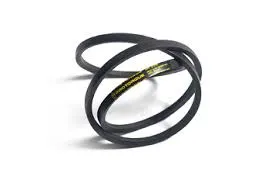- Arabic
- French
- Russian
- Spanish
- Portuguese
- Turkish
- Armenian
- English
- Albanian
- Amharic
- Azerbaijani
- Basque
- Belarusian
- Bengali
- Bosnian
- Bulgarian
- Catalan
- Cebuano
- Corsican
- Croatian
- Czech
- Danish
- Dutch
- Afrikaans
- Esperanto
- Estonian
- Finnish
- Frisian
- Galician
- Georgian
- German
- Greek
- Gujarati
- Haitian Creole
- hausa
- hawaiian
- Hebrew
- Hindi
- Miao
- Hungarian
- Icelandic
- igbo
- Indonesian
- irish
- Italian
- Japanese
- Javanese
- Kannada
- kazakh
- Khmer
- Rwandese
- Korean
- Kurdish
- Kyrgyz
- Lao
- Latin
- Latvian
- Lithuanian
- Luxembourgish
- Macedonian
- Malgashi
- Malay
- Malayalam
- Maltese
- Maori
- Marathi
- Mongolian
- Myanmar
- Nepali
- Norwegian
- Norwegian
- Occitan
- Pashto
- Persian
- Polish
- Punjabi
- Romanian
- Samoan
- Scottish Gaelic
- Serbian
- Sesotho
- Shona
- Sindhi
- Sinhala
- Slovak
- Slovenian
- Somali
- Sundanese
- Swahili
- Swedish
- Tagalog
- Tajik
- Tamil
- Tatar
- Telugu
- Thai
- Turkmen
- Ukrainian
- Urdu
- Uighur
- Uzbek
- Vietnamese
- Welsh
- Bantu
- Yiddish
- Yoruba
- Zulu
Nov . 10, 2024 04:58 Back to list
Exploring the Benefits and Applications of Link V Belts in Various Industries
Understanding Link V Belts A Comprehensive Overview
Link V belts are essential components in various mechanical systems, primarily used for power transmission in machinery. With their unique design, they are capable of providing flexibility and strength, making them ideal for applications that demand both efficiency and durability. This article delves into the characteristics, advantages, and applications of link V belts, helping readers understand their importance in industrial and commercial settings.
What Are Link V Belts?
Link V belts are a type of belt composed of interconnected links, typically made of rubber or thermoplastic materials. Unlike traditional V belts that are solid and fixed in length, link V belts are modular, allowing for adjustments in length and configuration as required by specific applications. The V-shaped cross-section of these belts effectively matches the grooves of pulleys, optimizing the grip and reducing slippage during operation.
Advantages of Link V Belts
1. Customizability One of the standout features of link V belts is their customizability. They can be easily configured to match the exact length and width needed for a specific setup, which is particularly beneficial in machinery where space constraints or specific alignment needs to be addressed.
2. Flexibility The flexibility of link V belts allows them to traverse around pulleys with varying diameters seamlessly. This characteristic is crucial in applications involving tight corners or variable-speed drives.
3. Easy Maintenance In comparison to traditional belts, link V belts are easier to maintain and replace. If a section of the belt is damaged, it can be quickly replaced without the need to replace the entire belt, thus reducing downtime and maintenance costs.
link v belt

4. Durability Made from high-quality materials, link V belts exhibit excellent durability. They are resistant to wear and tear, which minimizes the frequency of replacements needed, further enhancing their cost-effectiveness over time.
5. Reduced Noise Link V belts often operate more quietly than traditional belts due to their design, leading to a quieter work environment, which can be a significant advantage in settings like workshops and manufacturing plants.
Applications of Link V Belts
Link V belts are used across various industries, including
- Manufacturing In production lines, link V belts are used to drive conveyor systems, providing efficient movement of goods. - Agriculture They are essential in agricultural machinery, such as tractors and harvesters, where reliable power transfer is crucial. - Automotive In some vehicles, link V belts are used within the engine systems for various functions, such as powering water pumps and alternators. - Mining and Construction Heavy machinery used in these sectors often relies on link V belts for robust and efficient operation.
Conclusion
In conclusion, link V belts play a vital role in the efficiency and effectiveness of many mechanical systems. Their customizability, flexibility, ease of maintenance, durability, and reduced noise make them a preferred choice for numerous applications across various industries. As technology advances, the design and materials used in the production of link V belts will likely evolve, promising even greater performance and reliability. Understanding the significance of these belts can help industries leverage their full potential and improve operational efficiencies. Whether in manufacturing, agriculture, or automotive applications, link V belts are indispensable tools in the modern mechanical landscape.
-
Upgrade Power Steering Pump Belt for Smooth, Quiet Operation
NewsAug.27,2025
-
Precision Timing Belt & Chain: Engine Performance & Durability
NewsAug.26,2025
-
Precision Lathe Drive Belts: Durable & Reliable Performance
NewsAug.25,2025
-
84.5 Serpentine Belt: Durable & Precision Fit for Your Engine
NewsAug.24,2025
-
Premium Ribbed Drive Belts for Quiet Power Transmission
NewsAug.23,2025
-
High-Performance Vehicle Timing Belt for Engine Precision
NewsAug.22,2025

